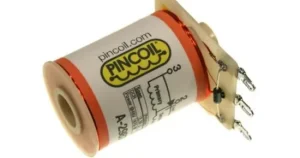In this guide, learn what is Solder Paste and How to Use it? Soldering is a major process in many manufacturing processes that use metals and other related materials. It is a process that permanently joins two metals together without engaging in fusing. Before engaging in this reliable process of joining two materials together, you must ensure that the surfaces of the two material boards are free from external particles to avoid short circuits or a total failure of the PCB.
The quest for a formidable and reliable means to join two boards together without short circuits or PCB failure made electronic manufacturers resort to the invention and use of solder paste.
Solder paste is a mixture of tiny solder spheres suspended in a specialized and unique form of solder flux. As the name implies, it has the texture of a paste. This is because solder paste acts as a bonding substance and is a good conductor of electricity.
Its pasty texture makes it easy to apply to boards during the PCB assembly process. Solder paste makes PCB assembly processes easy when used together with infrared reflow machines.
Solder paste is widely used in large-scale PCB assembly and prototype production. Most SMT assemblies rely on it as they consider it an easy-to-use solder medium.
Originally, solder paste was made of solder particles of tin and lead. Still, legislation has been implemented worldwide only to use lead-free solders, which are formed from various ingredients. One contains 99.7% tin and 0.3% copper, while others contain a variety of other metals, with tin not exempted.
Table of Contents
ToggleGrades of Solder Paste
Since soldering needs and processes, and of course, the material you want to solder differ, you need to choose the type of solder paste that suits your purpose.
Solder paste is graded based on the size of the solder balls, which has yet to be possible to measure their exact size and grade them accurately. The grading criteria to place solder balls in a particular grade band is for such solder balls’ 80% properties to fall in that size band.
The table below takes you on a tour of the various grades and the sizes of solder balls per grade.
| Solder Paste Grade(IPC Type Destination) | Particle Size (mm) |
| Type 1 | 75 – 150 |
| Type 2 | 45 – 75 |
| Type 3 | 25 – 45 |
| Type 4 | 20 – 38 |
| Type 5 | 10 – 25 |
| Type 6 | 5 – 15 |
| Type 7 | 2 – 11 |
| Type 8 | 2 – 8 |
Apart from the use of solder balls to grade solder paste, the solder flux type is also used to categorize solder.
The different solder flux types are highlighted below:
Rosin-Based Solder Paste
Rosin-based solder paste is derived from rosin, a natural extract extracted from pine trees. If necessary, the fluxes of rosin-based solder paste can be cleaned with a solvent after the soldering process.
Water Soluble Flux-Based Solder Paste
Glycol bases and organic materials make up the water-soluble flux-based solder paste. If there is a need for cleaning after soldering, there are various cleaning agents in the market that can clean the water-soluble fluxes.
No-Clean Flux-Based Solder Paste
Resins and various solid residues are used to make the no-clean flux-based solder paste. No-clean flux-based solder pastes save money on cleaning, capital expenses, and floor space.
Although no-clean flux-based solder pastes appear appealing, they require a very clean assembly environment, which often needs to be a reflow environment.
Here is a table of some common grades of solder paste, along with their key characteristics and typical applications:
| Grade of Solder Paste | Characteristics | Applications |
| Lead-free | It contains lead-free solder alloys | Exported electronic devices, environmentally friendly manufacturing |
| No-clean | The minimal residue after the soldering process | Tight spaces, sensitive components |
| Water-soluble | Flux medium that can be dissolved in water | High-cleanliness industries (medical, aerospace) |
| Low-temperature | Lower melting point | Components sensitive to heat, low melting-point alloys |
| High-temperature | Higher melting point | High-temperature environments, automotive, military electronics |
It’s important to note that this is just a sampling of the various grades of solder paste available. Many other specialized types of solder paste are available for specific applications, such as paste with high-tack properties for use in wave soldering processes or paste with low spattering for use in high-speed soldering processes.
How to Use Solder Paste
While it is a trusted soldering agent, there are stages and precautions involved in using solder paste in both mass and prototype PCB assembly. The first and most important precaution you must follow is to ensure that solder paste is applied only on the boards’ points you intend to the seller.
To ensure you do not misapply solder paste, here are some ways to guide you in achieving your desired soldering result.
Use Stencil
The best way to apply solder paste, especially in mass PCB assembly, is with a stencil. In this method, a stencil is placed over the board, and the paste is applied. You must ensure that the required amount is applied. Too little will make the joints not have enough solder, and too much will make the joints too large, which may result in poor joints and even shorts between adjacent pads and others.
Use Jet Printer
While stencils are acclaimed to be the best, some challenges come with their usage. Besides the difficulty in controlling the amount of paste you apply on a board when using a stencil, building a stencil is time and money-consuming. This is because you need to ensure that your stencil is built to match the pattern of your PCB assembly.
These shortcomings with the use of stencils are not known with the use of jet printers, even when it is not suitable for all solder paste types.
In this method, the jet printer is programmed following the PCB assembly pattern that comes with a cartridge that must be filled with solder paste. The printer then applies the appropriate amount of solder paste to the marked-out soldering areas of the board.
Jet printing the solder paste adds flexibility and precision to the application process.
Solder Paste Storage
No solder paste comes without a shelf life, usually on its label that determines when its efficacy lifespan. While solder paste can exhaust its shelf life before losing its potency, it needs to be correctly kept to maintain its potency.
When storing your solder paste, you must ensure it is in a suitable environment with the prescribed temperature. Otherwise, it will lose its properties and becomes impotent.
Solder spheres possess large surfaces. This makes them prone to oxidation. To avoid this, you must store them in airtight containers.
Apart from putting the oxidation level in check, it would be best if you stored your solder paste in a place with a shallow temperature to avoid the loss of the flux. However, the required storage temperature must not be below the freezing point.
Using solder paste that has lost some or all of its properties to create joints is unreliable, as such joints will be weak and easily breakable. This will, of course, make you spend more money as you may need to replace the whole circuit board.
Takeaway
Solder paste is a reliable agent for joint creation in the electronic manufacturing industry because of its electrical conductivity, anti-corrosion, and anti-oxidation prowess.
You must use the appropriate paste that suits your purpose or PCB assembly to achieve your desired soldering result.
Depending on your PCB assembly pattern, you can apply solder paste either by stencils or jet printers.
Proper solder paste storage is important to secure its potency throughout its life shell.
Related Guides:





